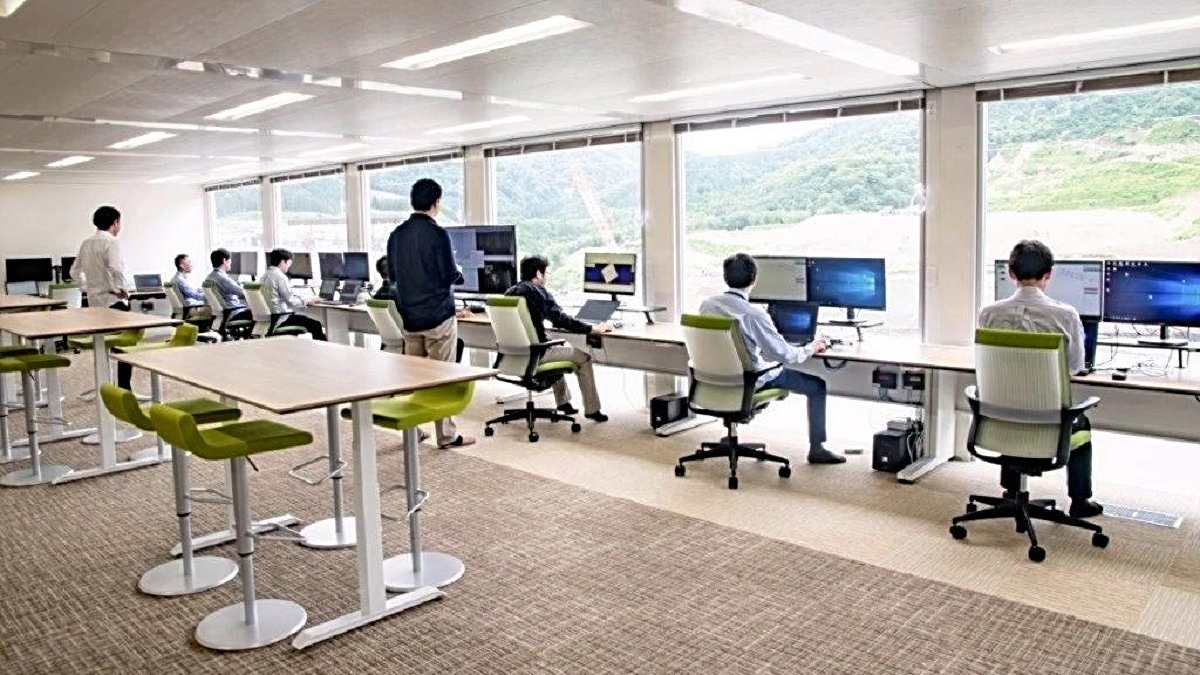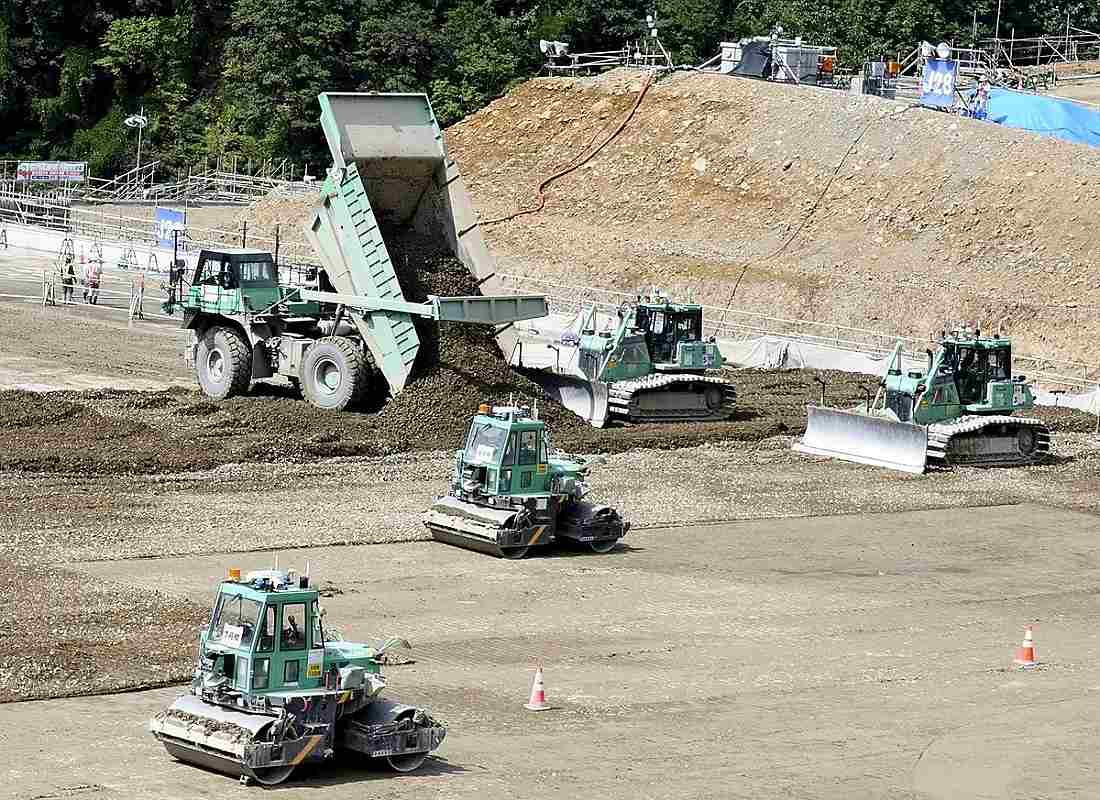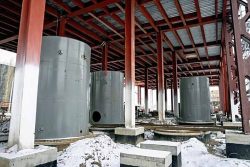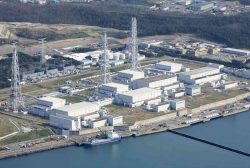
Construction workers monitor machinery at Naruse Dam in Akita Prefecture.
16:50 JST, November 30, 2020
Unmanned heavy machinery, remote-controlled robots and other digital technology are being actively used on construction sites.
Such technology was initially developed by general contractors to cope with labor shortages and the graying of their workers, but the spread of the novel coronavirus, which has forced people to reduce their contact with others, has fueled the trend for “remote work” in the construction industry.
Avoiding crowds
In July, Kajima Corp. installed unmanned machinery for construction of the Naruse Dam in Higashi-Naruse, Akita Prefecture. About eight heavy machines, including dump trucks, bulldozers and rollers, work together to carry, spread and harden cemented gravel. Their movements are programmed in advance, and workers monitor the operations from a remote control room.
The company will introduce up to 23 machines in the future, with four workers controlling the site.
“We can avoid crowded settings by operating with fewer people,” said the head of Kajima’s automated construction promotion section.
Shimizu Corp. is developing technology in which multiple robots are controlled by a tablet device to perform a sequence of operations together, from transporting materials to paneling ceilings. The unmanned transport of materials has already been introduced at construction sites, helping reduce the relevant number of workers by 70%, Shimizu said.
Remote inspections
Taisei Corp. utilizes artificial intelligence. In 2019, it carried out a reclamation project in Tokyo using unmanned machinery. When a camera installed in the machinery detects a person, AI calculates the distance and has the machinery either reduce speed or make an emergency stop.
Kawada technologies Inc., a medium-sized general contractor, collaborated with the Shibaura Institute of Technology and other entities to start developing remote-control technology using an avatar robot. Workers will be able to use it to measure the size of bridges and inspect cracks from other locations.

Unmanned machines operate at a construction site.
Collaboration
Companies are actively collaborating to develop such technologies. Kajima, Shimizu and Takenaka Corp. agreed in October to cooperate on the development of robots and digital technology. By doing so, they can save development costs and reduce the time subcontractors need to learn operations.
According to the Japan Federation of Construction Contractors, the number of construction workers is expected to decrease to 2.16 million in 2025, or two-thirds the level in 2014. One-fourth of construction workers in 2025 will be 60 or older.
Utilizing digital technology has become an urgent task.
"Business" POPULAR ARTICLE
-

Tokyo Economic Security Forum to Hold Inaugural Meeting Amid Tense Global Environment
-

Keidanren Chairman Yoshinobu Tsutsui Visits Kashiwazaki-Kariwa Nuclear Power Plant; Inspects New Emergency Safety System
-

Imports of Rare Earths from China Facing Delays, May Be Caused by Deterioration of Japan-China Relations
-

University of Tokyo Professor Discusses Japanese Economic Security in Interview Ahead of Forum
-

Japan Pulls out of Vietnam Nuclear Project, Complicating Hanoi’s Power Plans
JN ACCESS RANKING
-

Tokyo Economic Security Forum to Hold Inaugural Meeting Amid Tense Global Environment
-

Keidanren Chairman Yoshinobu Tsutsui Visits Kashiwazaki-Kariwa Nuclear Power Plant; Inspects New Emergency Safety System
-

Imports of Rare Earths from China Facing Delays, May Be Caused by Deterioration of Japan-China Relations
-

University of Tokyo Professor Discusses Japanese Economic Security in Interview Ahead of Forum
-

Japan Pulls out of Vietnam Nuclear Project, Complicating Hanoi’s Power Plans

























